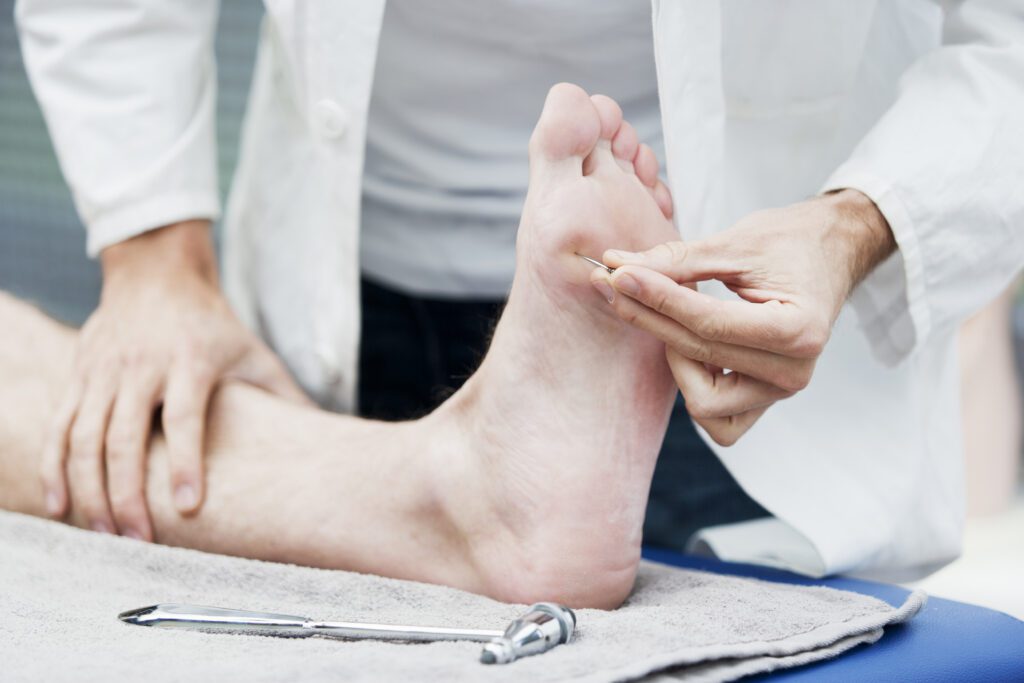by RYAN MILEJCZAK
Sponsored by Central Florida Health Care
Here in the U.S., diabetes is a major health issue, with approximately 11.6% of Americans suffering from type 1 or 2 diabetes and another 38% falling in the pre-diabetes range. Diabetes can have major, wide-ranging effects on various parts of the body, including the feet. We sat down with Central Florida Health Care podiatrist Dr. Jessy Pierre-Louis to learn more about diabetes and its connection to foot health.
In her work as a podiatrist, Dr. Pierre-Louis frequently sees patients dealing with diabetes.
“Diabetes essentially is a group of diseases that a person can get essentially because he/she has too much glucose, or sugar, in the body. When you have this high level of blood glucose, this creates a cascade effect that may turn into diabetes,” she explains.
One of the effects diabetes can have on the body is damage to the blood vessels of the feet, which can cause a number of additional problems.
“If you don’t have blood flow to your foot and you cut your foot, what happens? No blood, no healing. If your skin is so thin that it’s drying, and a dry spot changes to a wound, and it doesn’t have blood flow, no healing,” explains Dr. Pierre-Louis.
In addition to blood vessel damage, diabetes can also damage the nerves in the feet, leading to neuropathy.
“Diabetes with neuropathy means your sugar became so high that your nerves are now compromised, and now, you don’t have feeling in your foot,” she says.
These issues with nerves and blood flow can cause small problems to snowball into much larger ones, often without the patient even realizing.
“At the end of the day, these very simple things can end up leading to amputation, limb loss, or death,” she cautions.
Because of this, it’s essential for diabetics to take proper care of their feet and get frequent checks, including X-rays.
“When patients are diabetics, it’s also very important to get an X-ray of their feet,” Dr. Pierre-Louis explains. “Many patients ask me, ‘Why are you doing this? I don’t have any foot problems.’ Well, in that X-ray, I can see bad blood flow if your bones are breaking down to the point that you may get something called Charcot, which means that basically you have a complete breakdown of all of the bones in your foot.”
In addition to taking medication properly and performing frequent checks of the feet, selecting proper footwear is also important. Proper footwear for diabetics, she says, does not include certain sandals and flip-flops.
“If you’re a diabetic, I don’t believe you should wear flip flops, and I’m very opposed to most sandals,” she explains. “If you’re wearing a flip-flop and you’re diabetic, and you step on something and cut your foot, and you don’t have good blood flow, then that’s it. For someone with neuropathy, he/she does not have feeling, so if a wound develops, it may be there for a prolonged period of time and that person may not be aware. So you want to wear shoes that are going to protect your feet and not create a wound because the wound is your enemy.”
Instead, Dr. Pierre-Louis recommends opting for closed-toe shoes and shoes approved by the American Podiatric Medical Association. Additionally, she provided an easy way to determine whether a shoe is suitable for diabetics.
“If you buy a sneaker or a sandal and you can bend the tip to the end, that’s a shoe that will not provide good support and is not ideal. The shoe must be able to have a little bit of bend in the front, and the middle and back have to be supportive.”
